| Informational Websites | ChronoMaddox -- the legacy of Chuck Maddox | OnTheDash -- vintage Heuer website | Zowie -- Omega information |
| Discussion Forums | ChronoMaddox Forum | Heuer Forum | Omega Forum |
| Counterfeit Watchers | ChronoTools Forum | ChronoTrader Forum |
|
|
The largest independent, non-commercial, consumer-oriented resource on the Internet for owners, collectors and enthusiasts of fine wristwatches. Online since 1998. | |||||||
|
||||||||
|
||||||||
 |
Vintage Heuer Discussion Forum
The place for discussing 1930-1985 Heuer wristwatches, chronographs and dash-mounted timepieces. Online since May 2003. | ||||||
| |||||||
| |||||||
The year was the autumn of 1967 - it was an exciting time in history, not only for Heuer Time Corporation, the US subsidiary of Heuer but also for the sport of amateur and semi-amateur sports racing here in the United States.
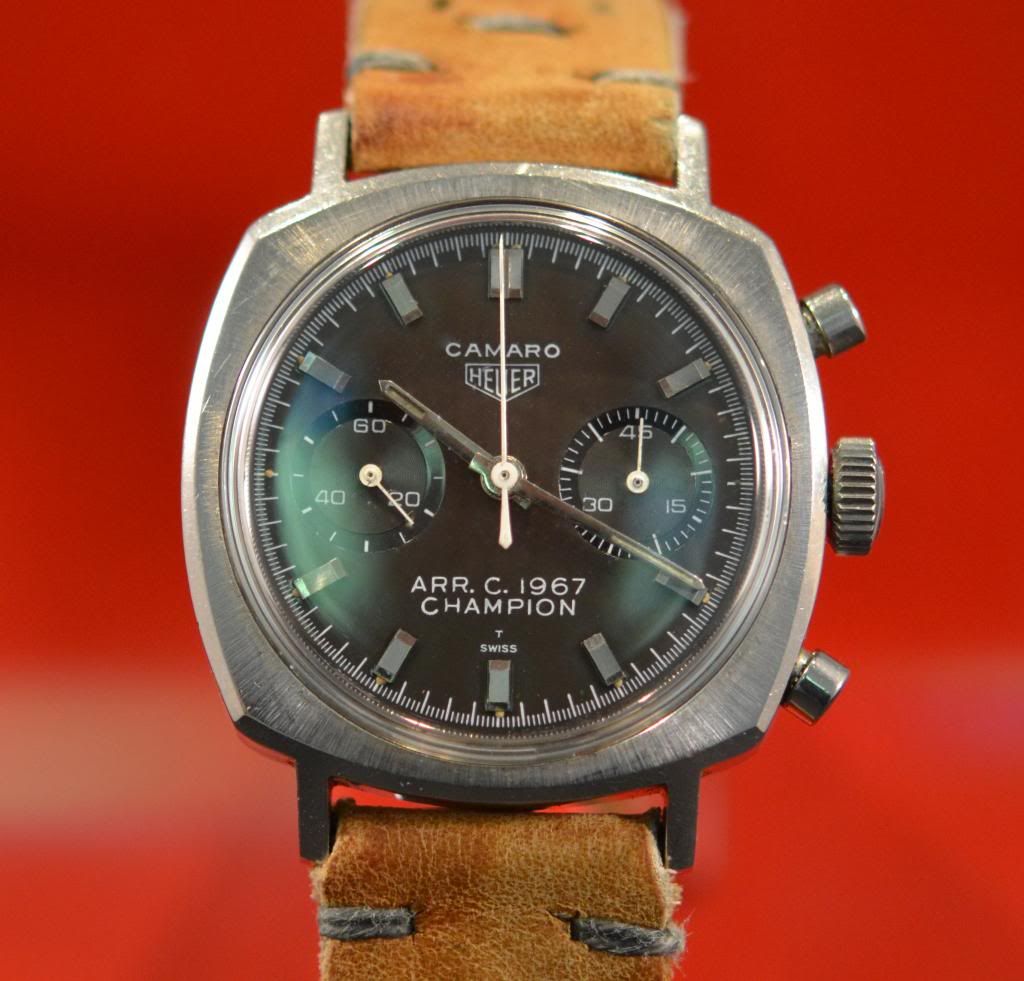
For Heuer it had been 4 years since HTC changed their US PR and advertising agency to a smaller firm that would later become a leader in the art of product placement. Earlier in the summer Heuer had managed to get their timing watches and equipment aboard the US teams vessels for the America's Cup - worth mentioning given this past weeks events and the presence of a Tag Heuer logo on The Team Oracle vessel.
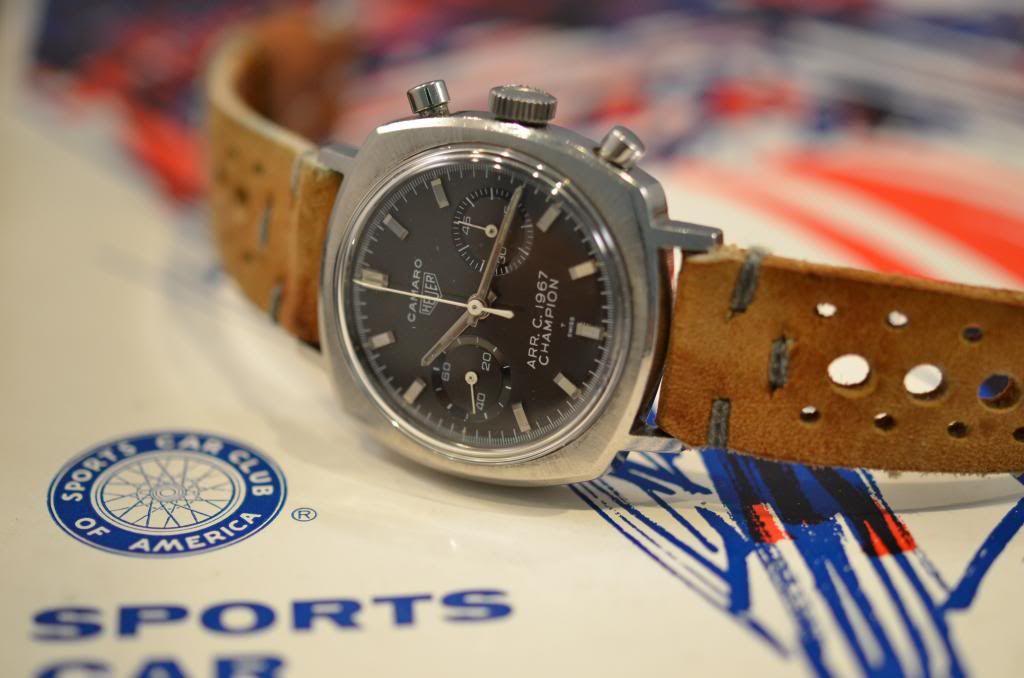
For the SCCA, it was also a year of great accomplishment. The SCCA for years had struggled to get the sort of deep pocketed sponsorship that it needed for the ARRC. Earlier that year it managed to get both the NEA and Nine Flags International to throw their weight behind the event. Other Sponsors included Celanese Fibers and most interestingly for us Heuer Time Corporation. Heuer according to the program guide for the 1967 American Road Race Championships would present the winner of each class with an Heuer Carrera 45. (An interesting twist given the watch below)
Skip ahead to February 2013 - a watch comes up for auction on EBay - it is an Heuer Camaro 45 with the inscribed words on the dial "ARR. C. 1967 Champion"
I happen to love the Camaro as a dress watch due to its slim profile. I put in a tepid bid not really expecting to win, we all know how that turns out sometimes. I later find out why. I was excited about the win, and wanted badly to post information about the piece on OTD but alas small life events sometimes conspire to delay our smaller ambitions. (My second daughter was born a few days later) The seller had posted some information about the watch which I had printed out but misplaced over the months.
While at the first evenings events at La Chaux de Fonds, amongst collectors, the wine flowed and much small talk and chatter of favored Heuer pieces were shared. It was then while talking with an exceptionally bright young man from Oxford (our good friend Eric Wind) recounted the story of my Camaro on eBay - how Jeff Stein had informed him the he would be bidding on behalf of the Tag Heuer Museum. This of course is only hear say - I assume if anything I have said is incorrect I would welcome the correction. Eric was also kind enough to inform me that a program guide from the 1967 ARRC championships that year was listed on eBay. I quickly secured it and some its content including Heuer's sponsorship of the event are included here:
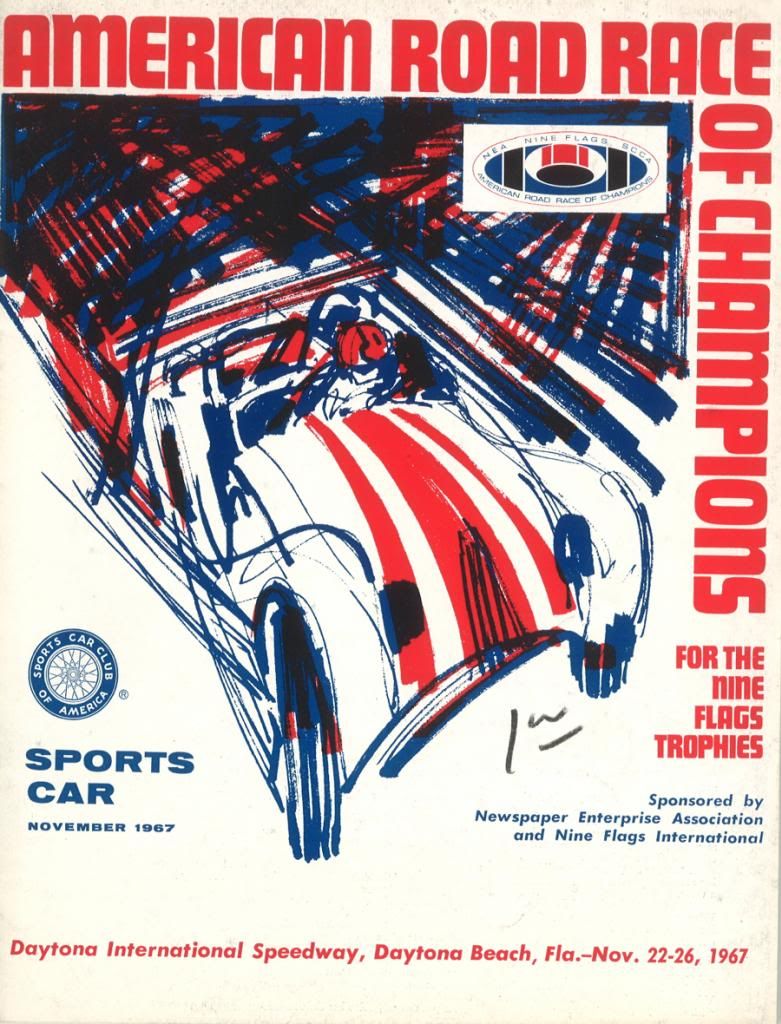
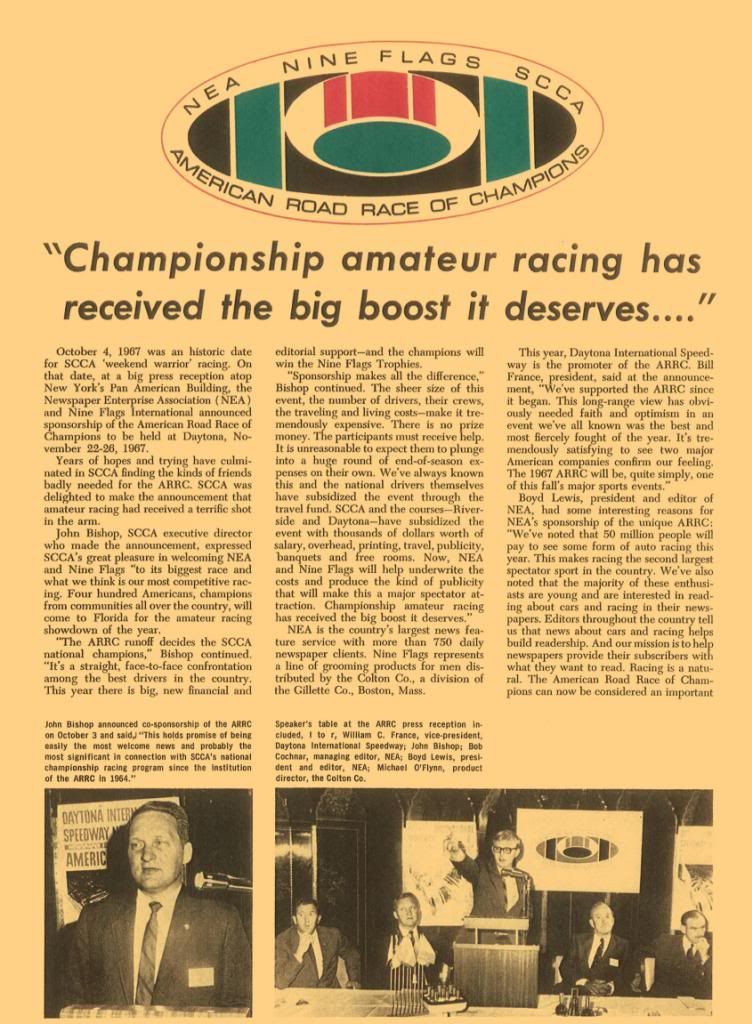
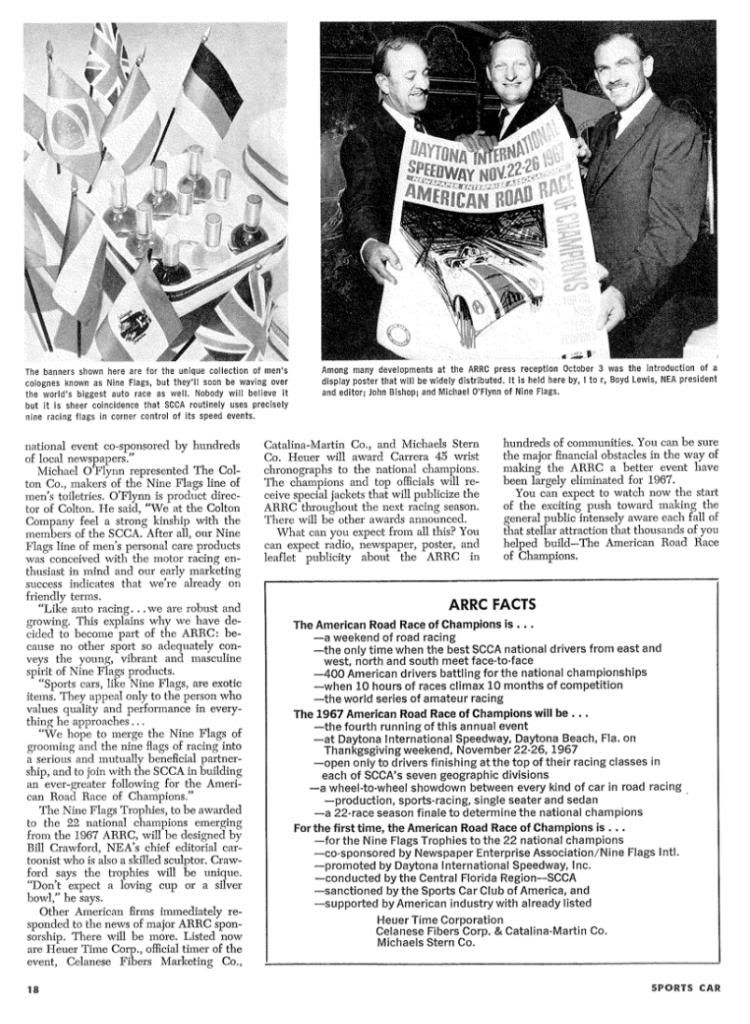
So what's with the watch?
It was awarded to the winner of the 1967 H-Modified Class ARRC Championship at Daytona - His name: JD Igleheart - he was a regular on the SCCA circuit for many years - a partial snapshot of his prior 3 years of racing is listed below:
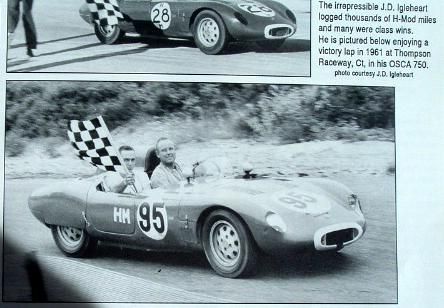

The History do the SCCA is summarized here:
The SCCA traces its roots to the Automobile Racing Club of America (not to be confused with the currentstock car series of the same name). ARCA was founded in 1933 by brothers Miles and Sam Collier, and dissolved in 1941 at the outbreak of World War II. The SCCA was formed in 1944, at first as only an enthusiast group. The SCCA began sanctioning road racing in 1948, with the inaugural Watkins Glen Grand Prix. Cameron Argetsinger, an SCCA member and local enthusiast who would later become Director of Pro Racing and Executive Director of the SCCA, helped organize the event for the SCCA
In 1951, the SCCA National Sports Car Championship was formed from existing marquee events around the nation, including Watkins Glen, Pebble Beach, and Elkhart Lake. Many early SCCA events were held on disused air force bases, organized with the help of Air Force General Curtis LeMay, a renowned enthusiast of sports car racing. LeMay loaned out facilities of Strategic Air Command bases for the SCCA's use; the SCCA relied heavily on these venues during the early and mid-1950s during the transition from street racing to permanent circuits.
By 1962, the SCCA was tasked with managing the U.S. World Sportscar Championship rounds at Daytona,Sebring, Bridgehampton and Watkins Glen. The club was also involved in the Formula 1 U.S. Grand Prix. SCCA Executive Director John Bishop helped to create the United States Road Racing Championship series for Group 7 sports cars to recover races that had been taken by rival USAC Road Racing Championship. Bishop was also instrumental in founding the SCCA Trans-Am Series and the SCCA/CASC Can-Am series. In 1969, tension and in-fighting over Pro Racing's autonomy caused Bishop to resign and help form theInternational Motor Sports Association.
The SCCA began sanctioning professional racing in 1963, when the United States Road Racing Championship was formed. In 1966 the Canadian-American Challenge Cup (Can-Am) was created for Group 7 open-top sportscars. The Trans-Am Series for pony cars also began in 1966. Today, Trans-Am uses GT-1 class regulations, giving amateur drivers a chance to race professionally.
Current SCCA-sanctioned professional series include Trans-Am, the SCCA Pro Racing World Challenge forGT and touring cars, and the Volkswagen Jetta TDI Cup. The SCCA also sanctions professional series for some amateur classes, such as the Mazda MX-5 Cup (Spec Miata), Spec Racer Ford Pro, Formula Enterprises Pro, and the F2000 Championship Series.
The club racing program is the road racing division where drivers race on either dedicated race tracks or on temporary street circuits. Competitors require either a regional or a national racing license. Both modified production cars (ranging from lightly modified cars with only extra safety equipment to heavily modified cars that retain only the basic shape of the original vehicle) and designed-from-scratch "formula" and "sports racer" cars can be used in club racing. Most of the participants in the Club Racing program are unpaid amateurs, but some go on to professional racing careers. The club is also the source for race workers in all specialties.
The annual national championship for Club Racing is called the SCCA National Championship Runoffs and has been held at Riverside International Raceway (1964, 1966, 1968), Daytona International Speedway(1965, 1967, 1969), Road Atlanta (1970–1993), Mid-Ohio Sports Car Course (1994–2005), and Heartland Park Topeka (2006–2008). Since 2009, the Runoffs are held at Road America in Elkhart Lake, Wisconsin, for a minimum of three years. The current SCCA record holder is Jerry Hansen, (former owner of Brainerd International Raceway), with 27 national titles.
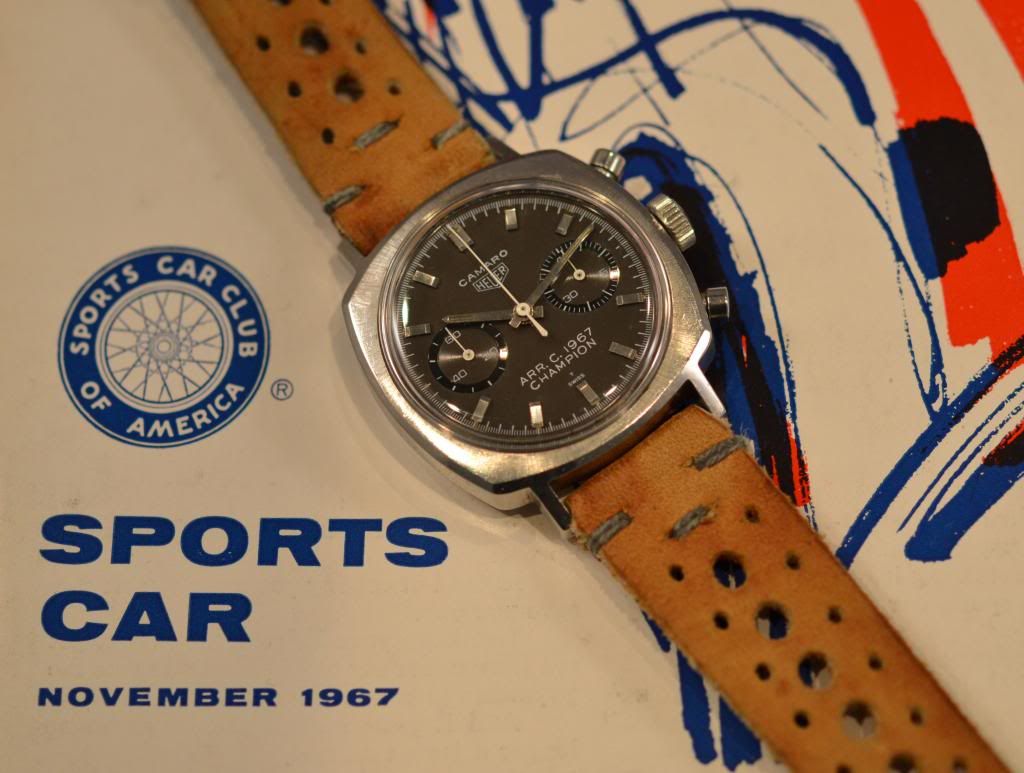
Hope you have enjoyed the reading.
Best Regards,
Lanny
| Chronocentric and zOwie site design and contents (c) Copyright 1998-2005, Derek Ziglar; Copyright 2005-2008, Jeffrey M. Stein. All rights reserved. Use of this web site constitutes acceptance of the terms of use. | CONTACT | TERMS OF USE | TRANSLATE |